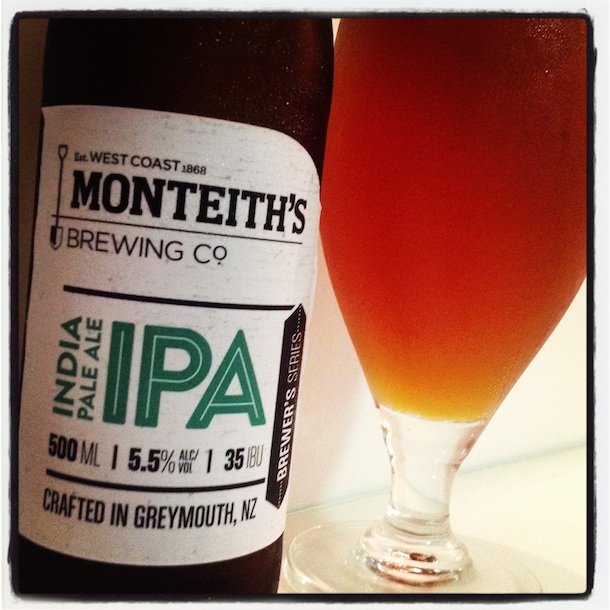 The Monteith’s range of beers today looks very different to when Neil Miller first encountered them as a lad of pretty close to the drinking age. Their selection was considered huge at a time where a lot of breweries only did three or four very similar beers. Monteith’s had Golden, Pilsner, Original, Celtic Red and Black. Later came the upstart Summer Ale, the (scary at the time) Doppelbock, a short lived Hefeweizen and what turned out to be their most controversial beer ever, Radler. This was due to a dispute over whether a company could trademark what is generally a beer style rather than name (and it turns out in this case they could).
The Monteith’s range of beers today looks very different to when Neil Miller first encountered them as a lad of pretty close to the drinking age. Their selection was considered huge at a time where a lot of breweries only did three or four very similar beers. Monteith’s had Golden, Pilsner, Original, Celtic Red and Black. Later came the upstart Summer Ale, the (scary at the time) Doppelbock, a short lived Hefeweizen and what turned out to be their most controversial beer ever, Radler. This was due to a dispute over whether a company could trademark what is generally a beer style rather than name (and it turns out in this case they could).
While reopening their Westport brewery, Monteith’s took the opportunity to create and launch the Brewers’ Series. These beers are a significant step up and give a clear indication of where the very clever people at Monteith’s think the market is heading and what people will want to drink more of. The unifying theme is more flavour and more intensity – whether that is ginger, cider apples, more hops or pinot barrel aging, the trend is unmistakable.
Four new ciders – Crushed Pear, Crushed Apple, Heritage Style and Ginger & Pear – show the rapidly growing importance of that market, which has gone from virtually nothing to a significant industry in what seems like a couple of years. Then there is use of wine and barrels in the aged Porter and Pinot Gris Lager. Tellingly, Monteith’s have moved from no Pale Ales in the Classic series to three in the new. This accurately mirrors the huge growth in popularity for big hoppy beers.
Sitting down and charting the development of the Monteith’s range is a lesson in the changing beer tastes of Kiwi consumers and their growing demand for difference and something memorable. Monteith’s (as part of DB), along with Independent Breweries (through Boundary Road) have probably been the quickest and the best of the big three breweries to react to the shift. Stores and retailers almost certainly need to the same. If your beer selection looks the same as two years ago then you are not even standing still – you are going backwards, says Miller.



